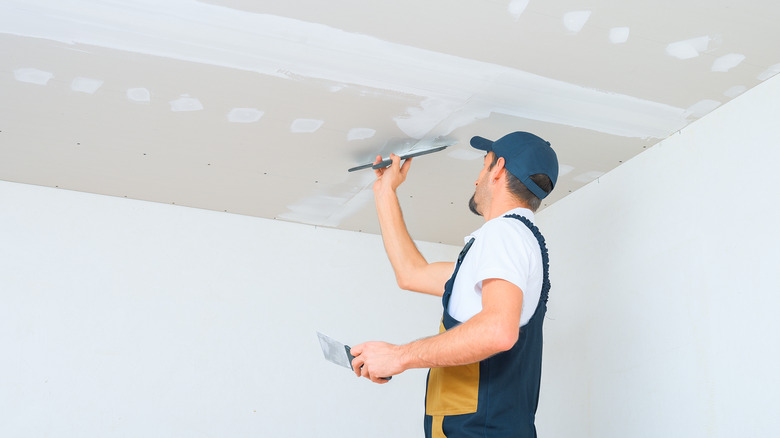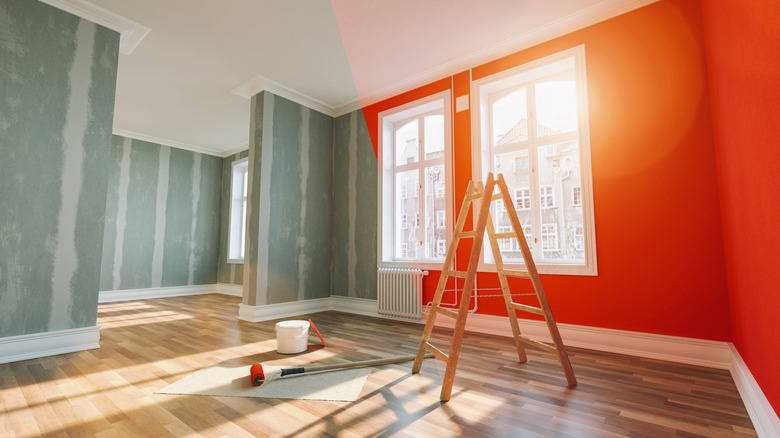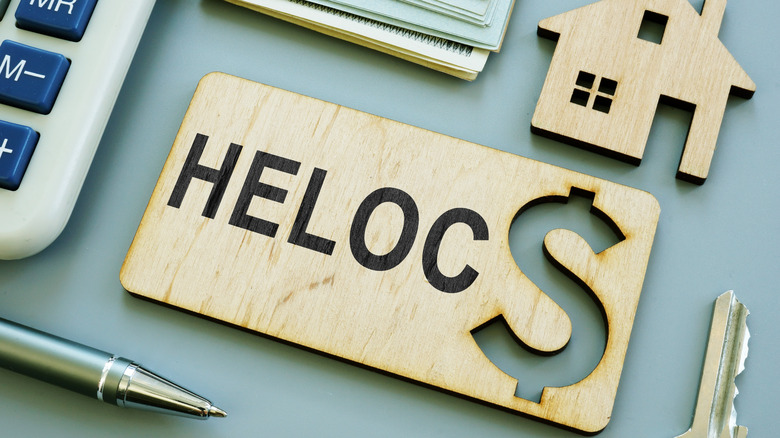Here's How To Have A Successful Renovation Amid Rising Inflation
Renovations are a great way to make a home feel like it does more for you and your loved ones. Your home provides the foundation for everything that you'll do on a daily basis, and a property that feels dated or lacks the energy and excitement that it once carried can stifle progress and inspiration for all the days that lie ahead.
Renovating a property gives a much-needed facelift and can be used to incorporate new features, design elements, and even additional floor space into the home. All of this can be used to account for new additions to the household or a sudden need to support increased workloads and daily tasks.
However, none of these additional features that come along with a renovation can provide the boost that they are intended to offer a property if the financial aspects of the update aren't within reach. In fact, homeowners yearning to make alterations to their homes but lacking the financial resources to support their plans may feel an even greater sense of stagnation. Inflation is one key issue that affects the renovation space and real estate more broadly (via Forbes Home). As of June 2022, the U.S. inflation figure stands at 9.1%, marking a significant rise above average figures and continuing a pattern of alarming financial data (via Trading Economics). Making improvements during these types of market conditions may be daunting, but they can still be highly productive and rewarding if approached with a level head.
Understand where you can improve the value of your property
The first thing you can do as a homeowner seeking improvements during a difficult marketplace is research. Understanding the landscape of opportunities in your particular home and your local market can make the renovation process far simpler, and the outcome much more enjoyable and rewarding.
The U.S. News and World Report notes that patience is one of the key assets that a homeowner can leverage (alongside cash) when approaching a home renovation opportunity. Because of the shifting cost calculations that govern supplies, labor pricing, and more in the home improvement sector, understanding where you can affect the greatest financial and utility value shift in the property is crucial. Adding a new room to support a new family member or a home office, improving the kitchen amenities, or renovating the laundry room to enhance the flow of the home can all make a big difference.
Considering the potential return on investment is important, but the fiscal value isn't the only source of inspiration for most home remodeling projects (unless you're gearing up to sell the home, of course). Blending the financial considerations alongside the potential for improving your home life should take center stage when considering remodeling opportunities.
Pay in cash wherever it's feasible
Cash is always a great way to pay for any sort of goods or services that you might want to purchase. The same approach works well when considering home improvements. Using cash gives you the ability to continue living your life without the worry over repaying debt and the added interest that's tacked onto the borrowed capital. The Money Hub reports that paying in cash for a home renovation is the cleanest and simplest way to fund your modernizations and updates. However, while a cash transaction might be simple for long-term budgeting purposes, it's anything but in the immediate present for many homeowners. An older property owner with a considerable amount of saved cash reserve and high equity in their home might be able to fund most or all of a renovation without dipping into a source of additional funding, but homeowners with young children and other considerations are often limited in their financial maneuverability.
It's a good idea to look into your existing cash reserves and determine how much of the update you can afford on your own — specifically without changing your emergency cash reserve situation or other rainy day funds. Then, once you've established the amount you can contribute (the funding that won't draw an interest rate over the long term), borrowing to make up the difference can get you all the way there.
Utilize HELOC financing to gain access to low interest rates
HELOC financing, or a home equity line of credit, is a great option for a homeowner seeking a low-cost option for borrowed cash that will make a big splash. HELOCs provide a substantial line of credit and offer this financing with wonderful repayment terms that break the arrangement into a draw period (often a decade or longer) and a repayment period that comes later. As well, HELOC financing offers some of the lowest interest rates on the market (5.04% as of July 2022, according to Bankrate). When compared to a credit card, which is a similar type of financial lending product, the difference is remarkable.
HELOCs offer a uniquely valuable approach to the monetary considerations that go into home improvements. Because this type of financial boost is tied directly into the home itself, your equity in the property creates the opportunity to borrow against the asset. By renovating the home to increase value with this line of credit, you increase your total debt, but improve the value and therefore the equity that you enjoy in the property.
Take out a home equity loan to finance the value improvement
A home equity loan is another good approach to the home improvement opportunity before you. Bankrate reports that July 2022 rates hover around a 7.64% APR, which significantly outpaces credit card options but lags behind the ultra-competitive opportunity that HELOC financing can provide. If you haven't owned your home for a long time, or would prefer a set repayment term rather than the potentially confusing arrangement that home equity lines of credit create, a home equity loan might be the perfect option for taking advantage of low-cost lending.
Just like a HELOC, using a home equity loan to improve the property itself is a great way to maintain favorable equity and value balance in the space. Improvements will often pay for themselves over time, so utilizing the value of the home to create the financial means to improve it moves the needle on your home's potential profit creation in the future. All homeowners will eventually move out of their properties (whether to better support their lifestyle needs or after passing), and structural improvements, even when done during times of immense inflation, will even out over the long term.
Inflation fluctuates over time, but on a longer timeline, buying power in today's dollars will always diminish. This means that a renovation done today with a low-cost financing option to underpin the changes will balance out as the gradual changes over the decades push this total cost downward.
Target only the most important spaces in your home for the greatest value return
In addition to the need to take time to understand the local market for contractors, opportunities that will enhance your lifestyle, and more, it's essential to budget wisely and only focus on elements of the home that provide value. It's easy for a project to run far beyond the initial scope of the renovation. When tearing up the floor to replace old carpeting with new hardwood floors, for instance, it can be tempting to extend the scope of this replacement and tackle tiling upgrades in the bathroom or kitchen at the same time.
Levelset reports that this issue is called scope creep. Identifying important renovation features and then maintaining a laser focus on those elements is crucial for any home improvement project, but when the costs of the remodel are ballooned because of inflation, maintaining scope and budget control is more important than ever. Working with your contractor to identify important features that will be included in the remodel is the starting point for any project, but the next conversation should be about limiting scope creep and only performing improvements on the areas that provide essential value in some form or another.





